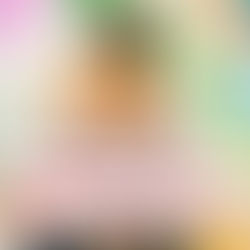Understanding Rococo Art: From Decorative Style to Celebrated Artists
- Shantala Palat
- Jun 27
- 4 min read
Updated: Jul 2
Since time immemorial, art has captivated the human spirit—enamouring, inspiring, and inviting us to see the world through different eyes. Whether you’re a practicing artist, a seasoned collector, or simply someone who finds joy in wandering through galleries, exploring the timeline of art history can open up an entirely new layer of appreciation.
In the prehistoric era, early humans used natural pigments to depict animals and symbolic forms on cave walls an honest, primal expression of their lives and beliefs. The ancient world saw the rise of storytelling through sculpture, mosaics, and the decoration of utilitarian objects, often celebrating gods, heroes, and everyday life. Then came the medieval period, where art took a more solemn tone, focusing largely on biblical themes and classical myths.
From there, the Renaissance breathed life and realism back into painting and sculpture, followed by the theatrical flair of the Baroque and the elongated grace of Mannerism. Finally, we arrive at the Rococo—an art movement that lightened the mood, quite literally. Let’s find out more about this interesting form of art from India’s renowned contemporary artist Shantala Palat.

What is Rococo Art?
Originating in France, Rococo art is known for its playful elegance and rich, decorative detail, full of swirling patterns, leaves, and charming animal shapes. Often seen as a softer, more graceful take on the grand drama of the Baroque style, Rococo reflects the tastes of the aristocracy and the leisurely lives of the wealthy. Unlike the strict, formal look of earlier periods like the Renaissance and Mannerism, Rococo has a light, carefree feel. Its paintings often show well-dressed nobles enjoying themselves—flirting in gardens, relaxing at picnics, or exploring romantic, almost dreamlike settings that blur the line between fantasy and reality.
The word "Rococo" itself comes from the French term rocaille, which refers to the use of shell-like, ornamental curves often seen in decorative arts of the time. And that's exactly what Rococo embodied—an emphasis on decoration, detail, and delight.
French Rococo
French Rococo was a decorative style that blossomed in early 18th-century France—think soft colours, graceful curves, and beautifully detailed furniture.
It really hit its stride in the 1740s, becoming a symbol of refined taste and elegance, especially among the French aristocracy.
Rococo wasn’t just about looks—it captured the mood of the time. Life for the wealthy was all about pleasure, beauty, and enjoying the arts.
The upper class had the means and time to support theatre, music, and art, which helped the Rococo style spread across Europe.
Paris was the creative hub during this period. Artists like Fragonard and Boucher became famous for their romantic, playful, and sometimes sensual paintings.
Some critics have called Rococo too shallow or frivolous, but it can also be seen as a gentle rebellion against the heavy, serious Baroque style that came before.
Even though the style faded after the French Revolution, Rococo’s legacy lives on. Its lightness, charm, and attention to detail still influence designers and artists today.
Italian Rococo
Italian Rococo: During the late 1600s and into the 1700s, Italy embraced a new artistic wave—the Rococo style—bringing with it a sense of elegance, charm, and decorative brilliance.
The style was known for its lightness, intricate detail, and soft pastel tones, often drawing inspiration from nature.
Giovanni Battista Tiepolo stood out as one of the most celebrated Italian Rococo painters. His large-scale works, filled with mythological and biblical scenes, carried a playful, uplifting energy.
Tiepolo’s influence went beyond Italy—he even painted the ceilings of the Würzburg Residence in Germany, alongside his son, from 1752 to 1754.
Venetian furniture makers also embraced Rococo. They crafted elegant commodes with flowing curves and decorated them with painted scenes, flowers, or Chinoiserie—usually in blue or green tones to match the style of local painters.
Artists like Giovanni Battista Crosato brought ceilings to life with illusionistic painting, giving flat surfaces the illusion of depth and grandeur.
Another notable name, Giovanni Battista Piazzetta, made a mark with dramatic church ceiling artworks in Venice.
Murano glassmakers added their own sparkle to the movement, producing colourful chandeliers, decorative mirrors, and finely engraved glassware that became sought after across Europe.

Between the 1730s and 1770s, the Rococo style truly blossomed in southern Germany and Austria. It was during this time that it became the defining look for many churches, so much so that even today, you can still feel its presence throughout the region. It's more than just a decorative style here; it's part of the local identity and cultural heritage.
Names like Claude III Audran, Gilles-Marie Oppenordt, Germain Boffrand, Jean Mondon, and Pierre Lepautre may not be household names today, but their influence was powerful. They helped shape the early direction of Rococo with elegant, playful, and refined designs.
But once German architects got their hands on it, the style took on a whole new life. What had been relatively delicate in France became bold, dramatic, and utterly captivating in the hands of German craftsmen.
What Makes German Rococo So Unique?
Asymmetry was key – nothing was too neat or too perfect, which gave the designs energy and motion.
Ornamentation went all out – surfaces were packed with decorative elements, from curling stucco to playful motifs.
Flowing, organic lines – moldings and forms twisted and turned, creating a sense of movement and rhythm.
No harsh corners – walls and ceilings melted into each other with soft curves and rounded forms.
Stucco details that felt alive – vines and foliage seemed to grow right out of the walls.
Touches of gold and silver – used to highlight details and contrast beautifully against pale or pastel backgrounds.
Light, airy colours – whites, soft blues, pinks, and creams gave interiors a dreamy, heavenly feeling.
This article will take you through the whimsical world of Rococo art, exploring its origins, unique characteristics, and celebrated artists from France, Italy, and Germany. Whether you're an art lover or simply curious, you'll discover how this graceful style captured the spirit of its time and left a timeless legacy.





























Comments